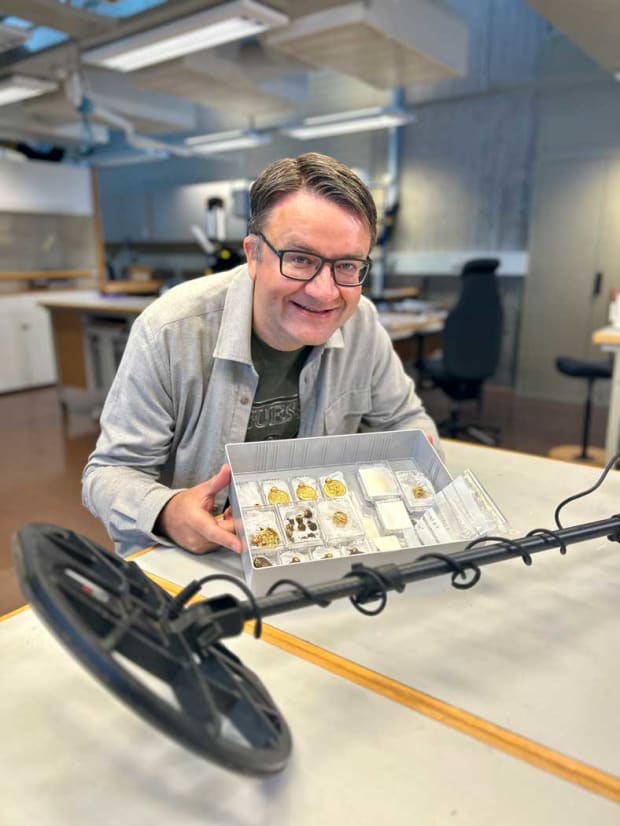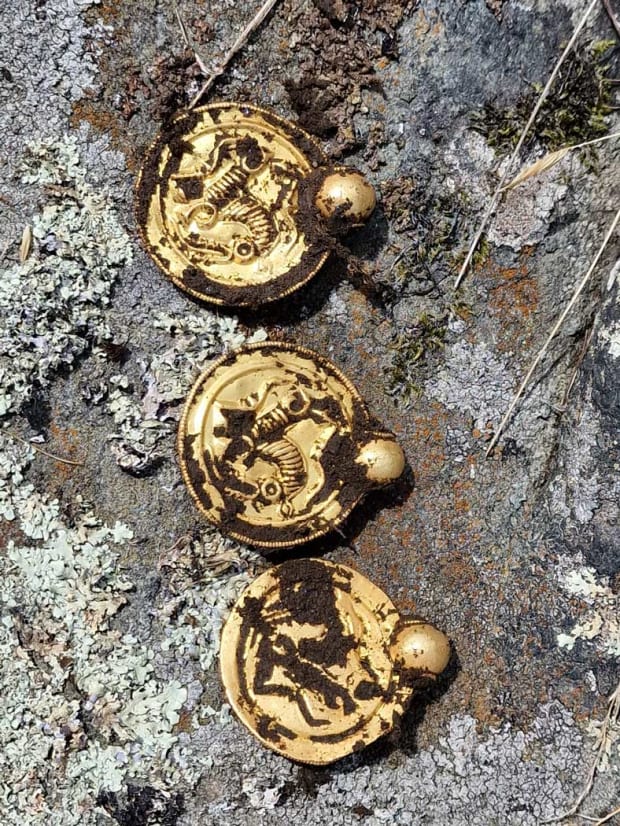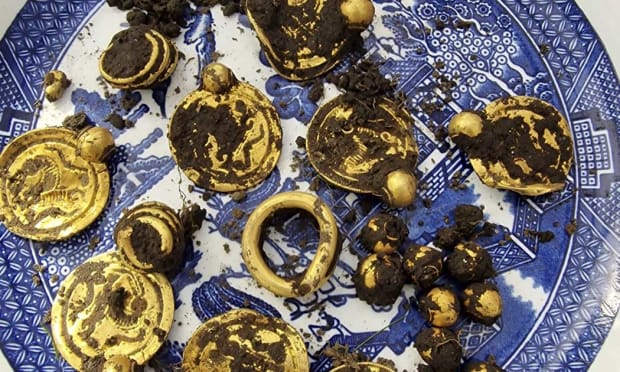#Doctor #Ordered #Norwegian #Metal #Detectorist #Unearths #Gold #Find #Century
Earlier this year, Erlend Bore’s doctor told him he needed a hobby, anything to get the 51-year-old Norwegian man off the couch and to get moving. So Bore bought a metal detector – and almost had a heart attack when he stumbled across Norway’s most stunning gold find in a century.
In August, Bore unearthed nine coin-like gold pendants engraved with rare horse symbols, along with ten gold beads and three gold rings on the southern island of the island of Rennesøy, near the city of Stavanger, in one of the most amazing discoveries in Norwegian history.

Courtesy Anniken Celine Berger, Museum of Archaeology, University of Stavanger
On the advice of his doctor, Bore was out walking the mountainous island with his metal detector when he came across the treasure weighing more than 100 grams (approximately 3 1/2 ounces). Bore said his “heart was racing” when he realized the magnitude of his discovery.
“I had been searching along the shore but only found scrap metal and a small coin. So, I decided to explore higher ground, and the metal detector immediately started beeping,” Bore said. What he held in his hands was a clump of earth containing what looked to be gold coins. “At first, I thought I had found chocolate coins or plastic pirate treasure. It was surreal.”

Courtesy Erlend Bore via Museum of Archaeology, University of Stavanger
“This is the find of the century in Norway,” said Ole Madsen, the Director of the Museum of Archaeology, University of Stavanger. “Discovering such a significant amount of gold at once is extremely rare.”
According to Associate Professor Håkon Reiersen at the Museum of Archaeology, the gold pendants date from around 500 AD. The gold pendants – known “bracteates” – resemble gold coins but were used primarily as jewelry, not for buying or selling goods.

Courtesy Annette Græsli Øvrelid, Museum of Archaeology, University of Stavanger
“The nine bracteates and the gold beads would have formed an exceptionally splendid necklace, which was crafted by skilled goldsmiths and worn by the most powerful individuals in society,” Reiersen said. “Finding so many bracteates together is exceedingly rare. This is the first such find in Norway since the 1800s, and it’s also an uncommon find in a Scandinavian context.”

Courtesy Erlend Bore via Museum of Archaeology, University of Stavanger
Per Norwegian law, the monumental discovery has been turned over to the government. All objects dating before 1537 and coins older than 1650 are considered state property and must be reported. The gold find is now with the Museum of Archaeology.
You May Also Like:
700 Civil War-era Gold Coins Found Buried in Kentucky Cornfield
British Couple Discovers Buried Treasure Under Kitchen Floor
